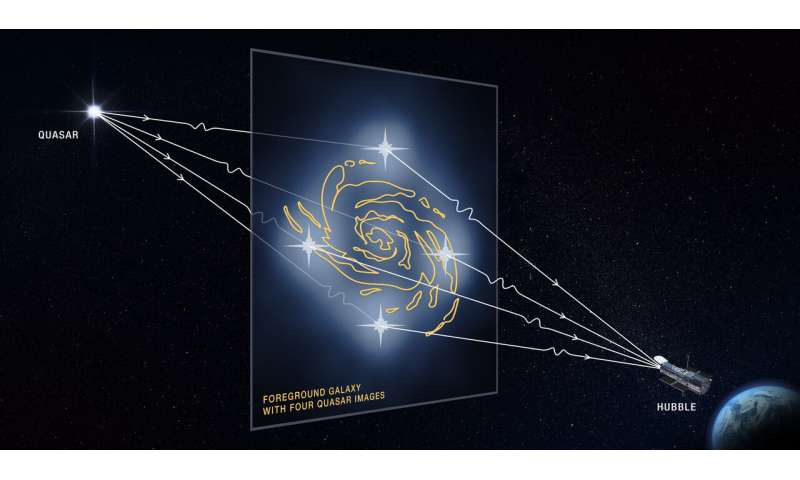Best of Last Week – Smallest known dark matter clumps, gold made of plastic, a beverage to control blood sugar levels

It was another good week for physics as a team with members from Yonsei University, Lyon University and KASI found new evidence that showed that a key assumption made in the discovery of dark energy is in error—they found a significant correlation between SN luminosity and stellar population age at a 99.5 percent confidence level. Also, a team with members affiliated with several institutions in the U.S. reported that Hubble data revealed the smallest known dark matter clumps to date—by measuring how the light from faraway quasars is affected as it travels through space.
In technology news, several media outlets reported that Intel and Lenovo demonstrated devices with foldable screens that could move such devices from novelty status to the mainstream. And a team of engineers at the University of Missouri designed an on-skin electronic device that provides a personal air conditioner without electricity—using passive cooling. Also, a team at Technion and TowerJazz built a two-terminal floating-gate transistor for neuromorphic computing—and they did it using standard single-poly technology and a commercial 180-nm CMOS process. A team at the University of Sydney announced that they were preparing for the hydrogen economy—after determining how hydrogen leads to embrittlement of steels.
In other news, a team of biologists from the MDI Biological Laboratory and the Buck Institute for Research on Aging identified pathways that extend lifespan by 500 percent in nematodes. And a team at ETH Zurich made headlines by creating an 18-carat gold nugget made of plastic—it weighed five to 10 times less than traditional gold. Also making news was work by a team at Stanford University—they reported evidence showing that the human body temperature has decreased in the U.S. since the 19th century.
Finally, if you are among the millions of people around the world worried about developingdiabetes, help might be on the way. A team of researchers at the University of British Columbia reported that a new food supplement called ketone monoester could help control blood sugar levels..
© 2020 Science X Network